Agritechnica is the world’s leading trade fair for farm machinery. This year’s show to be held at the Hanover exhibition center from November 10 to 14 (Preview Days: November 8 and 9) will feature numerous innovations. No fewer than 311 innovations have been registered with DLG (Deutsche Landwirtschafts-Gesellschaft/German Agricultural Society) which is organizing the fair. Applying the strictest criteria, an independent panel of experts appointed by DLG has conferred Gold Medals on five of these innovations and Silver Medals on a further 44.
Gold Medals
Fendt VarioGrip Pro
AGCO GmbH – Fendt, Marktoberdorf, Germany; Hall 20, Stand B08f and MITAS a. s., Prague, Czech Republic, Hall 20, Stand E29
Inflating tractor tires quickly for road travel
Tire pressure control systems offer many uncontested advantages, but also one drawback: they are very slow in inflating the tires for road travel. Besides, they require the engine to be revving at high speeds to provide the necessary drive power for the compressor while the tractor is stationary.
The Fendt 'VarioGrip Pro' uses an additional high-pressure tire inside a bespoke and newly developed tire. This internal tire serves as an accumulator which allows the inflation pressure to be altered very quickly. The air is pumped into the internal tyre through a simple rotary union which also ensures it cannot escape. The valves involved and the pressure sensors are powered through inductive transmission inside the axle. The same applies to the control signals. Dispensing with extra compressors, pressure tanks and control lines, this technology is able to increase the inflation pressure from 0.8 bar to 1.8 within 30 seconds by exchanging the pressure directly and without having recourse to engine speed. This quick tire pressure control system reduces the time spent in road travel and allows field work at low and soil-friendly pressures.
Connected Nutrient Management
John Deere GmbH & Co. KG, Mannheim, Germany; Hall 13, Stand E30 and LAND-DATA Eurosoft – a BayWa Company. Pfarrkirchen, Germany; Hall 15, Stand G30 and Vista Geowissenschaftliche Fernerkundung GmbH, München, Germany, Hall 15, Stand G31j und RAUCH Landmaschinenfabrik GmbH, Sinzheim, Germany, Hall 9, Stand A63 und SULKY BUREL, CHATEAUBOURG, France, Hall 11, Stand C23
Comprehensive nutrient management
Maintaining the nutrient balance of the field from harvest to harvest currently involves extensive calculation and planning efforts for the farmer. Connected Nutrient Management is a user-friendly, optimized nutrient management system enabling the demand-oriented, precise application of organic and chemical N and P fertilizers. The system supports planning and optimization with a holistic, overall observation of the harvest history and includes technologies for highly precise fertilizer application.
The data, knowledge and key technologies owned by innovation partners John Deere, Land Data Eurosoft, VISTA, Rauch and Sulky have been tied up in a smart, complete bundle to offer the user an agronomically optimized, site-specific nutrient application system complying with fertilizer application regulations. This ensures higher precision when planning and applying organic or artificial fertilizers. At the same time, the system is a cost-cutter, optimizing yields in terms of quality and quantity while complying with the strict fertilizer regulations and offering site-specific documentation. For the first time ever, farmers will be able to precisely determine, apply and document nutrient demands (nitrogen, phosphates etc.) for specific sub-areas, regardless of the type of organic or artificial fertilizer used. Since nutrient distribution is optimized according to sub-area demands and vegetation times, it provides a higher level of nutrient efficiency and also optimizes nutrient balances.
There has never before been a similar integrated solution offering maximum customer value while proactively considering the prevailing environmental and legislative constraints.
Connected Crop Protection and Chemical Application Manager
John Deere GmbH & Co. KG, Mannheim, Germany; Hall 13, Stand E30 und BASF SE, Ludwigshafen, Germany; Hall 15, Stand G33A und Informationssystem Integrierte Pflanzenproduktion (ISIP) e.V., Bad Kreuznach, Germany; Hall 15, Stand G31H und Zentralstelle der Länder für EDV-gestützte Entscheidungshilfen und Programme im Pflanzenschutz (ZEPP), Bad Kreuznach, Germany, Hall 15, Stand G31H und Kuratorium für Technik und Bauwesen in der Landwirtschaft e.V. (KTBL), Darmstadt, Germany, Hall 15, Stand G31H und Julius Kühn-Institut (JKI), Bundesforschungsinstitut für Kulturpflanzen, Quedlinburg, Germany; Hall 15, Stand G31H
Comprehensive support for spraying operations
Crop treatment requires farmers to look at a range of different information in order to decide on a specific treatment. The growing complexity of the information and statutory requirements they have to consider can lead to mis-application and the risk of spraying non-target areas.
The combination of Connected Crop Protection and the Chemical Application Manager is an intuitive system that helps users make a sound decision for a targeted, well-timed, and precise application. This integrated system relies on a range of key technologies that offer recommendations and operator assistance for filling and spraying and automatically take buffer zones into account and comes with full documentation. It also integrates the Chemical Application Manager, a joint development by BASF and John Deere in conjunction with public-sector partners ISIP, ZEPP, JKI and KTBL.
The data is transmitted in the universal ISO-XML format, an open format that allows the integration of further applications in the Manager. This industry standard will offer the possibility of integrating solutions from other partners and decision making assistance systems or the use of third-party spraying technology in the future. For the first time, this holistic system integrates all data, knowledge and tools that users need to come up with a treatment decision that implements application at variable rates and complies with national laws.
The user controls the cycle, plans and edits precision farming applications, documents the individual jobs and provides his partners with access to the consultation feature. So there is nothing stopping this defined, legally compliant application with non-contact operation through voice or gesture control and integral TankFillCalculator from being implemented. For added safety, the system scans product codes for further automation of the documentation.
In summary, this is the first system to provide farmers with a fast, efficient and integral method of crop treatment: from problem identification to treatment recommendation, an application that complies with the law and provides prompt and time-efficient documentation.
PREMOS 5000
Bernard Krone GmbH, Spelle, Germany, Hall 27, Stand G20
Producing forage pellets in the field
Pellets made from agricultural feed crops can be used as fuel, bedding, feed and animal toys.
Premos 5000 is the first mobile pellet harvester that produces 16 mm diameter pellets without pre-crushing and by using two interlocking die rollers. The machine is designed for on-site use where it picks the material directly from the straw swath. The system is extremely efficient and has a low specific energy input per tonne of pellets produced.
John Deere ProCut
John Deere GmbH & Co. KG, Mannheim, Germany; Hall 13, Stand E30
Sharp setting
Especially in the heat of harvest, it is essential to keep the knives on the forager chopping drum sharp and to adjust the counterblade as appropriate.
John Deere's 'ProCut' controls the gap between the knives and the counterblade. The system does not measure the gap with the help of vibration sensors but with an inductive method and two special sensors. In addition, it is also possible to measure automatically the sharpness of all knives. The system offers great benefits for the customer, because it always indicates the best time to adjust the counterblade and sharpen the knives and also recommends the number of grinds to be applied. With all elements always in their best condition, fuel consumption drops and so do the costs for knives, counterblade and grinder.
Silver Medals
CVT front pto
ZUIDBERG Frontline Systems B.V., Ens, The Netherlands, Hall 3, Stand C25
Stepless pto
CVT CORP, Sainte Julie (Qc), Kanada, Halle 17, Stand B09a
Typically, pto speed is controlled by engine speed, since the power-take off shaft is connected to the engine's crankshaft.
In very many applications, however, the engine could be operated at lower speeds and still maintain the optimum pto speed for the implement. This is what the new infinitely variable front pto does. It maintains its speed irrespective of the current engine speed and within a specific engine speed range, for example it is possible to operate the pto at 1,000rpm while the engine is revving at a speed between 1,400rmp and 2,100rpm. The pto speed itself can be selected steplessly between two critical limits.
A fuel-saving and work-quality boosting system.
Peecon Gull Wing double tire system
PEECON, Etten-Leur, The Netherlands, Hall 25, Stand D05
Dual wheels travelling on piggy back
If fitted with dual wheels, a modern tractor will easily exceed the permitted overall width for travel on public roads. The new hydraulic folding system is the first system that allows quick attachment and removal of rear dual wheels. During road travel, the dual wheels remain on the tractor and are folded up and behind the tractor cab. When the machine arrives in the field, the operator folds down the wheels without having to leave the cab. The duals are then attached to the rear wheels via a special coupling system and the tractor is quickly ready for work.
Fendt VarioDrive driveline
AGCO GmbH – Fendt, Marktoberdorf, Germany, Hall 20, Stand B08f
Redefining the driveline
Growing engine power and an increasing demand for higher efficiency make it necessary to re-assess present powertrain concepts. The innovate 'Fendt VarioDrive' powertrain system constantly compares and adjusts the speeds of the front and rear axles, thereby eliminating any excessive wheel slip and avoiding torsional effects in the powertrain in all situations. 'Pull-in-Turn' is a feature that reduces the turning circle. As ground speed increases the system uncouples the hydromotor on the front axle to increase the efficiency. This is further increased by reducing the gearbox input speeds.
The system enhances the overall driveline efficiency, prevents reactive power and makes for soil-friendly operation.
iTEC AutoLearn - the world’s first auto-teaching tractor
John Deere GmbH & Co. KG, Mannheim, Germany; Hall 13, Stand E30
The auto-teaching system
Using a headland management system or programming headland turn sequences into the system requires navigation of the software menu, which is often a challenge for uninitiated operators.
The 'iTech AutoLearn' system from John Deere supports operators, because it detects similar headland sequences automatically. After it detects that the last sequence was repeated three times, it suggests that the sequence should be automated. The operator can accept the suggestion by pressing a button to store it to the system. Such an auto-recorded sequence can also be edited at a later time.
The new system promotes the overall acceptance of fatigue-reducing and efficiency-boosting headland management systems.
Zürn i-flow
Zürn Harvesting GmbH & Co. KG, Schöntal-Westernhausen, Germany,
Hall 13, Stand C24 und
Gebr. Schumacher GmbH, Eichelhardt, Germany, Hall 13, Stand D26 und
Eichelhardter Werkzeug und Maschinenbau GmbH, Eichelhardt, Germany, Hall 13, Stand D26 und
Compact Dynamics GmbH, Starnberg, Germany, Hall 13, Stand C24 und
HTW Dresden, Professur für Grundlagen der Elektrotechnik / Elektrische Antriebe, Dresden, Germany, Pavilion 34, Stand B13c
Electrification for optimum header settings in all conditions
Up to now, it was not possible to adjust the header settings (except for the reel) steplessly and independently of all other combine settings and thereby respond to the current harvest conditions, machine requirements and ground speeds.
Zürn has now developed the fully electric control cereal header i-Flow. The elevator driveshaft drives a 60V alternator package which powers the electric motors that drive all revolving assemblies. The motors also serve as sensors on electric drives. This design unlocks potential to optimize the header functions: the speeds of all assemblies can be adjusted individually to conditions, such as reducing belt or auger speeds in low-yielding crops or patches. The speeds can also be matched to the current load on the combine, such as controlling chopping frequency relative to the work rate. The electric header also offers intelligent overload protection and provides further potential for optimizing the crop flow whilst reducing wear and interacting with the combine.
Linde HMV105D
Linde Hydraulics GmbH & Co. KG, Aschaffenburg, Germany, Hall 16,
Stand D19
Higher specific power and efficiency driveline
As machines grow in performance and throughputs, drivelines are coming under revision by developers.
Linde has developed a new double-axial piston hydro motor, the HMV 105 D. The unit is made up of two swash plate motors which are arranged face to face on the piston end of a shaft. This design allows the use of one swash plate to alter the oil flow from both motors. This way, the inner motor forces are compensated and it is possible to use smaller bearings, which in turn reduces friction. Compared with the single motor version, the new HM 105 D double motor generates higher maximum speeds and hence increases the ratio at which the oil flow is transformed into rotary movement. The new double motor is also 30% lighter in weight than a motor with transaxle and shorter than other module versions.
Its two drive shafts reduce the space required inside a driveline, which results in an overall higher specific power.
CLAAS 4D cleaning for LEXION-Hybrid combine models - uncompromised cleaning on the slope by fan and rotor segment control
CLAAS-Vertriebsgesellschaft, Harsewinkel, Germany; Hall 13, Stand C05
Self-levelling system for tracked models
Combine losses increase despite the use of self-levelling sieves when the machine is working at high throughputs across a slope. The reason for this is that a mix of chaff and grain collects on the downhill side of the sieves after the rotors and the return pan feed the material to the downhill side on the grain pan.
The so-called 4D cleaning system from Claas aims at maintaining the high performance of hybrid combines even in hilly fields and when working across the slope and downhill. Established self-levelling systems for wheeled combines are not suitable for these high-capacity machines which usually run on tracks. The rotor cage panels now have three segments, and each segment consists of two sections that can be opened and closed relative to the slope gradient, directing the separated material to the hillside return pan only and hence to the grain pan, thereby preventing too much material from collecting on the downhill side of the cleaning system and sudden surge in losses.
Simple by design, the system has a complex control system that boosts performance of the combine and hence the efficiency of high-capacity combines on the slope.
Integral drive on Fendt Former 12555X
AGCO GmbH – Fendt, Marktoberdorf, Germany, Hall 20, Stand B08f
Electric rotor drive
Traditionally, the rotors on rotary rakes are powered mechanically, hydraulically or by the driveshaft.
The Fendt integral drive is the first compact electric torque drive that is integrated in the top of the rake. Each motor is controlled independently by a separate electronic system, and this allows the fitting of an automatic overload protection and a quick stop mechanism. Each rotor can operate at its own individual speed and can thus respond to the specific harvest conditions. The specific energy input is lower than that on direct drive systems.
Fendt 360° camera for X/P Series combines
AGCO GmbH – Fendt, Marktoberdorf, Germany, Hall 20, Stand B08f
John Deere 360 deg 3D camera system
John Deere GmbH & Co. KG, Mannheim, Germany; Hall 13, Stand E30 and
Continental Automotive Austria GmbH, Wien, Austria, Halle16, Stand G05
Driver Extended Eyes
SAME DEUTZ-FAHR, Lauingen, Germany, Hall 4, Stand C36
Digital imaging technologies: New dimensions in driver safety and assistance systems
Digital image processing increases the potential of imaging systems that detect the environment of an agricultural machine. The technology is a major advance from purely visual solutions.
The factory-installed technology processes digital data, which expands the operator's vision by offering perspectives from different angles or integrates additional information and image processing algorithms into the image. Using a number of cameras, the system creates a 360-degree panoramic view and 360 degree image of the machine and its surrounding from various perspectives including a bird's eye view (John Deere 360 deg 3D camera system, Fendt 360 deg 3D combine camera). Furthermore, it is possible to import additional information into the system, including projected wheelmarks or the pivoting range of the machine's rear end (John Deere). The Driver Extended Eyes system from Same Deutz-Fahr demonstrates the potential of digital camera image processing for enhanced operator focus.
This innovation provides a major boost to the aspects of safety, driver assistance and automation.
Read the full press release to see the entire list of Gold and Silver medal winners.


![Hcm Ax Landcros Press Release[32] jpg](https://img.oemoffhighway.com/mindful/acbm/workspaces/default/uploads/2025/11/hcmaxlandcros-press-release32jpg.mAEgsolr89.jpg?auto=format%2Ccompress&fit=crop&h=100&q=70&w=100)
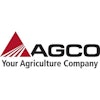
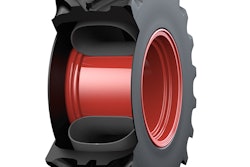
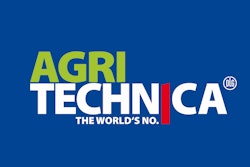

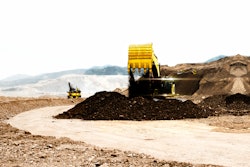
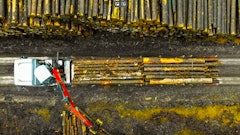

![Hcm Ax Landcros Press Release[32] jpg](https://img.oemoffhighway.com/mindful/acbm/workspaces/default/uploads/2025/11/hcmaxlandcros-press-release32jpg.mAEgsolr89.jpg?ar=16%3A9&auto=format%2Ccompress&fit=crop&h=135&q=70&w=240)







